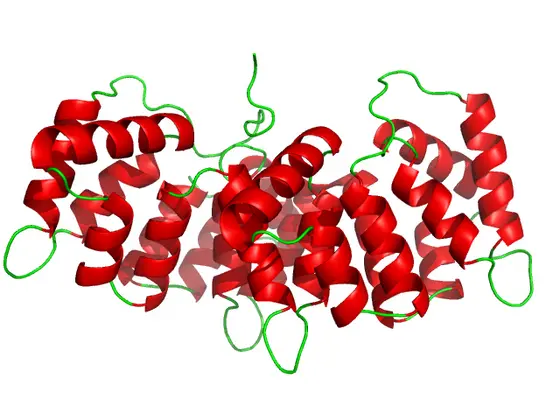Why is it that cells that are dying from programmed cell death, or apoptosis, do not trigger a strong immune response in the body? After all, dying cells emit a host of proteins that one would normally expect to activate the immune system. Heiko Weyd from the German Cancer Research Center (Deutsches Krebsforschungszentrum, DKFZ) in Heidelberg already unraveled this biological mystery several years ago: When inducing the process of apoptosis, cells rapidly transport a protein called annexin to their surface. It acts like a stop signal for specific immune cells, thereby preventing the immune system from launching a response.
DKFZ researchers Heiko Weyd and Peter Krammer now plan to utilize this highly efficient immune blockade to suppress undesired immune responses, which are the cause, for example, of allergies and potentially life-threatening autoimmune diseases.
The researchers' plan is to fuse the effective part of annexin directly to allergens (such as birch pollen) or autoantigens (such as insulin in type 1 diabetes) and to attach this construct to microparticles that will be administered to the patient. “The idea is to block an undesired immune response against the allergen or autoantigen very specifically – while not suppressing the whole immune system,“ said DKFZ immunologist Krammer. In experiments with immune cells in the Petri dish, the researchers have already been able to show that this is a functioning active principle.
The investigators have given their project the name of “Therannex“, which refers to the envisioned therapeutic use of annexin. The process of developing this captivating principle into a therapy method will be a long one and, above all, it will involve high costs. This is where the VIP+ (Validation of the technological and social innovation potential of scientific research) funding program by the Federal Ministry of Education and Research (BMBF) comes in. It invites scientists to take the first step towards economic utilization of their findings outside the world of research. The VIP+ initiative helps scientists examine and prove potential applications and the innovation potential of their research results. If they are successful, there will be a better chance for them to find an industrial partner for developing a marketable product.
“The project is interesting for investors, but we have only reached the middle of the development process,“ Weyd said. “The BMBF funding will help us over the next three years to conduct most of the preclinical testing. This will enable us to better assess chances for success and tolerability.“ Should the outcomes of the upcoming examination series be positive, the DKFZ researchers plan to found a spin-off company, with the goal of making the therapeutic method available for clinical application.
H.Weyd, L.Abeler-Dorner, B.Linke, A.Mahr, V.Jahndel, S.Pfrang, M.Schnolzer, C.S.Falk, and P.H.Krammer. Annexin A1 on the surface of early apoptotic cells suppresses CD8+ T cell immunity. PLoS One. 8:e62449 (2013).
B.Linke, L.Abeler-Dorner, V.Jahndel, A.Kurz, A.Mahr, S.Pfrang, L.Linke, P.H.Krammer, and H.Weyd. The tolerogenic function of annexins on apoptotic cells is mediated by the annexin core domain. J Immunol. 194:5233-5242 (2015)



